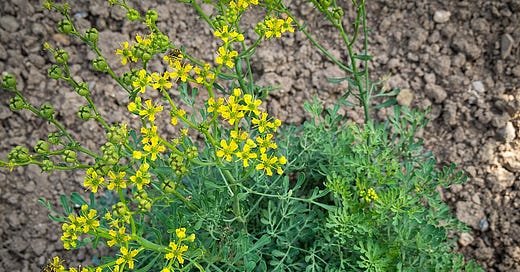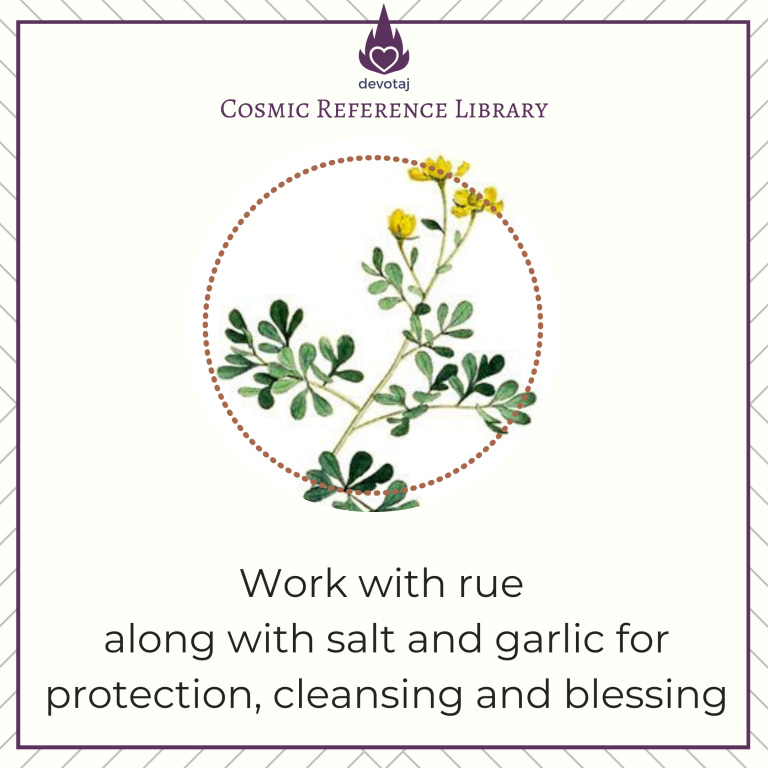Rue/Ruda (Ruta Graveolens)
Peigam (פיגם)
Also known as “Herb of Grace”
I first learned about the use of rue in Jewish sacred arts, spiritual, and magick in the amazing book Ritual Medical Lore of Sephardic Women: Sweetening the Spirits, Healing the Sick. It women (and some men) refer to using rue in EVERYTHING. Need to bless something up — sprig of rue. These were women of Italian and Iberian descent, so it didn’t surprise me. I was already familiar with the Strega (Italian witchcraft) practice of the cimeruta, an amulet in the shape of a sprig of rue with other symbols hanging from it. I even made one for a Strega friend, years back.
Most likely, women of this region used it because it was everywhere. Folk magick is practical. What’s around that you can use? Rue? Great. The amulets and medicines these women made seemed to always have garlic, rue, and salt. I have made those the basis of many of my own amulets. Garlic for cleansing and protect, salt for sacralizing and rue for blessing it up.
Rue is mostly likely a substitute for hyssop, based on what I can find. Hyssop was used to sprinkle water or blood on altars in the Torah. Rue is native to the Balkans, and found all over the Mediterranean. While it only vaguely resembles rue, both are antiseptics. Although be careful with rue, it can cause dermatitis and is somewhat toxic when ingested.
Keep reading with a 7-day free trial
Subscribe to Making Magic/k/q to keep reading this post and get 7 days of free access to the full post archives.





